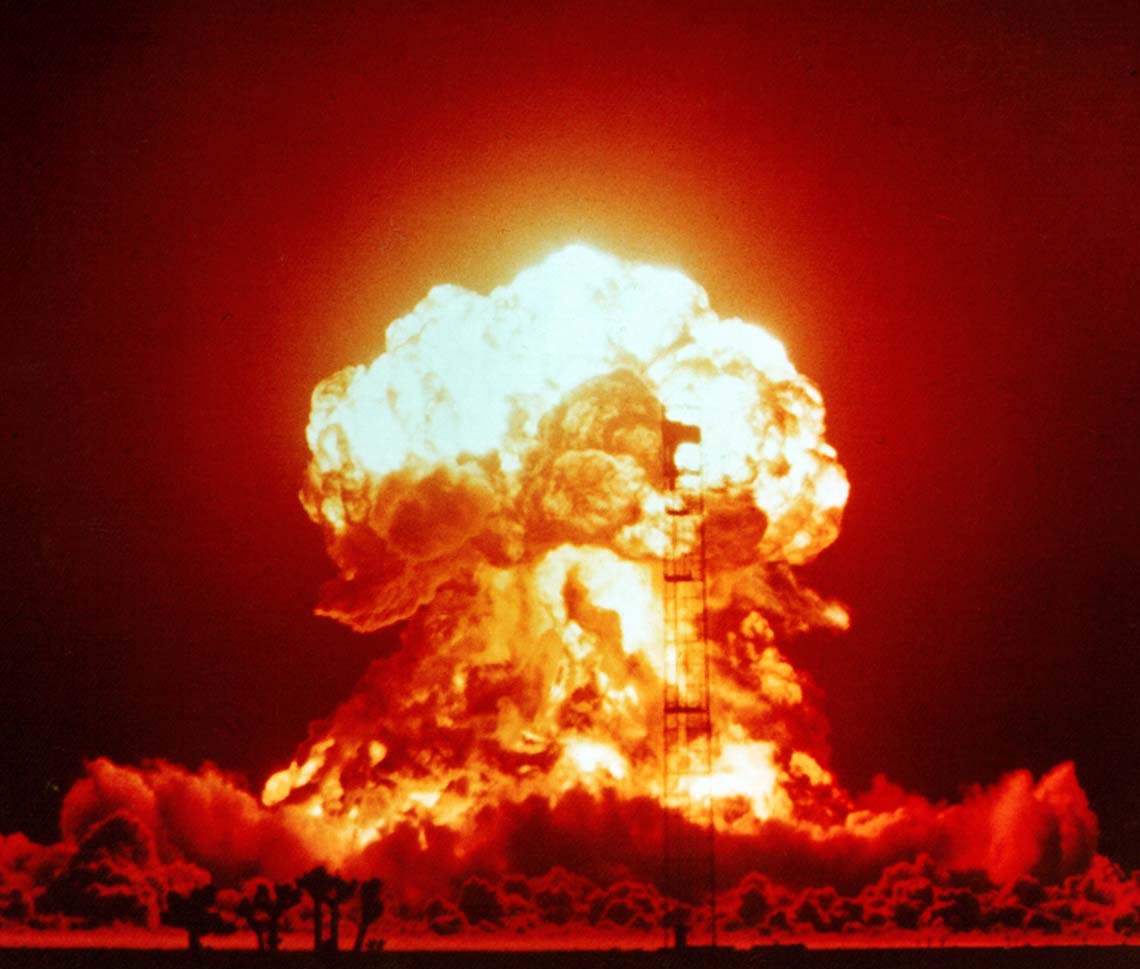Part 1 of 2 Parts
I have often blogged about the threat of nuclear bombs. This is a fear that haunted my childhood and still troubles my thoughts. Seventy years ago, the U.S. dropped atomic bombs on Hiroshima and Nagasaki, Japan which led to the end of the World War II in the Pacific. Whether or not it was necessary has been argued since then. We have been very fortunate that brave and wise men have pulled us back from the brink several times since the bombing of Japan when the world was on the edge of nuclear annihilation. On several occasions, they disobeyed orders and training because they could not bring themselves to end human civilization. Today I am going to consider several possible future situations that could result in the detonation of one or more nuclear bombs.
Obviously, the most discussed possibility for nuclear war is an outbreak of conflict between the U.S. and Russia which inherited the Cold War nuclear arsenal of the defunct Soviet Union. Both countries possess over four thousand warheads and over fifteen hundred delivery vehicles including bombers, submarines and missiles. These weapons are operational and could be launched in a matter of minutes by either side. There has been a major reduction of warheads since the Cold War as a result of a series of treaties. While neither side thinks it can win a full scale nuclear war, there is a danger of an accident involving the early warning radar systems triggering an exchange of nuclear missiles. There is also a possibility that a regional war with conventional weapons could escalate into a full nuclear war as the U.S. was drawn into a conflict by treaty obligations.
The U.S. and Russia are not the only countries that possess nuclear weapons. There are also smaller nuclear powers that could engage in a nuclear war. India and Pakistan have a long history of conflict over border disputes and other issues that have led to several conventional wars since World War II. Both sides have more than a hundred nuclear warheads and delivery systems to attack each other. Since they are sitting next to each other, if either side attacked the other, the attacking side would soon experience fallout from its own weapons. The destabilization of the region and the horrendous humanitarian crisis would engulf both nations even if one side was the technical winner. However, there are fanatic nationalists on both sides who might be willing to start a nuclear exchange if they ever rose to power. Even a few hundred nuclear warheads could trigger a nuclear winter that could severely impact the entire world by triggering a nuclear winter.
There is the possibility of a nuclear state using nuclear weapons against a non-nuclear state. Russia has actually threatened to use tactical nuclear weapons against NATO in a regional conflict in Eastern Europe if it was losing to NATO's conventional weapons and ground troops. This would invite retaliation with nuclear weapons from NATO and could cause severe damage in Eastern Europe even if it did not escalate into an exchange of intercontinental ballistic nuclear missiles between the U.S. and Russia. Israel has a nuclear arsenal which it could unleash if it was being overwhelmed by conventional weapons ground troops from surrounding hostile non-nuclear nations. This would likely cause massive destruction and loss of life in the Middle East and ultimately severely impact the entire world.
(Please read Part 2)
